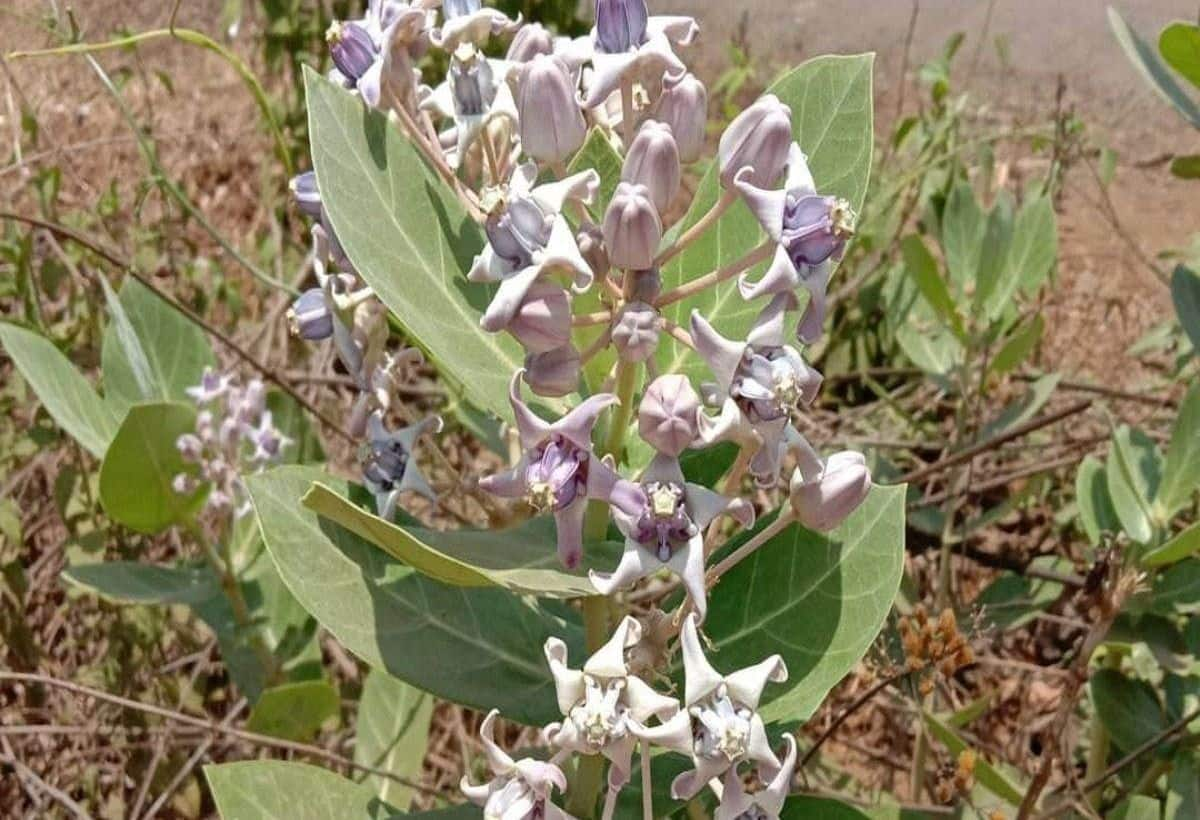Diabetes is a chronic condition that, while currently incurable, can be effectively managed through lifestyle modifications, including a healthy diet and regular exercise. Symptoms of diabetes can manifest in several ways, such as increased thirst, dry mouth, low blood pressure, dizziness, fatigue, impaired vision, and delayed wound healing. In India, traditional knowledge, especially Ayurveda, has provided numerous remedies for managing various health conditions, including diabetes. One such remedy is the use of Aak leaves, derived from the Aak plant, which is highly regarded in Ayurvedic practices.
Understanding the Aak Plant
Also known as Giant Calotrope (scientific name: Calotropis gigantea), the Aak plant is recognizable for its striking flowers and leaves. While the plant is considered poisonous, it also holds remarkable health benefits. The leaves and flowers of the Aak plant have been used for centuries to treat a variety of ailments, including diabetes, respiratory issues, and skin disorders. Due to its anti-inflammatory and antioxidant properties, the Aak plant can provide significant relief for those suffering from diabetes.
Benefits of Aak Leaves for Diabetes
Aak leaves are often considered a boon for individuals dealing with diabetes. The juice extracted from these leaves is incorporated into Ayurvedic medicinal formulations, such as Swarnabhasma, known to aid in diabetes management. The healing attributes of the Aak plant work to reduce oxidative stress and inflammation, both of which are critical in controlling blood sugar levels.
How to Use Aak Leaves for Diabetes Management
To harness the benefits of Aak leaves, follow these simple steps:
- Pluck fresh Aak leaves and thoroughly wash them.
- Apply the leaves to your soles, and then wear socks before going to bed.
- Remove the socks in the morning. This practice is believed to help in reducing blood sugar levels over time.
Additional Health Benefits of Aak Leaves
- Respiratory Health: Aak flowers are believed to be beneficial for asthma sufferers. Regularly consuming dried Aak flowers can help alleviate lung-related issues.
- Pile Treatment: Individuals suffering from piles can benefit from Aak leaves. Soaking the leaves and stalks in water and consuming it can provide relief from this condition.
- Skin Care: Aak extracts can also tackle skin dryness and rashes. Burning the plant’s roots and mixing the ash with mustard oil creates a remedy effective for relieving itching and skin irritations.
Precautions When Using Aak Leaves
While Aak leaves can offer many health benefits, caution is required due to the toxicity of the plant. The white sap produced by Aak leaves can be harmful, particularly to the eyes. Here are some precautions to consider:
- Handle Aak leaves with care to avoid contact with the eyes.
- Store fresh Aak leaves out of reach of children to prevent accidental ingestion.
Conclusion
The use of Aak leaves as a natural remedy for diabetes illustrates the importance of traditional medicine in modern health management. However, integrating Aak leaves or any treatment should always be done in consultation with a healthcare professional to ensure safety and appropriateness for individual health needs.
Disclaimer: The information provided in this article is for educational purposes only and should not be considered as medical advice. Always consult with a healthcare provider before starting any new treatment or therapy.











